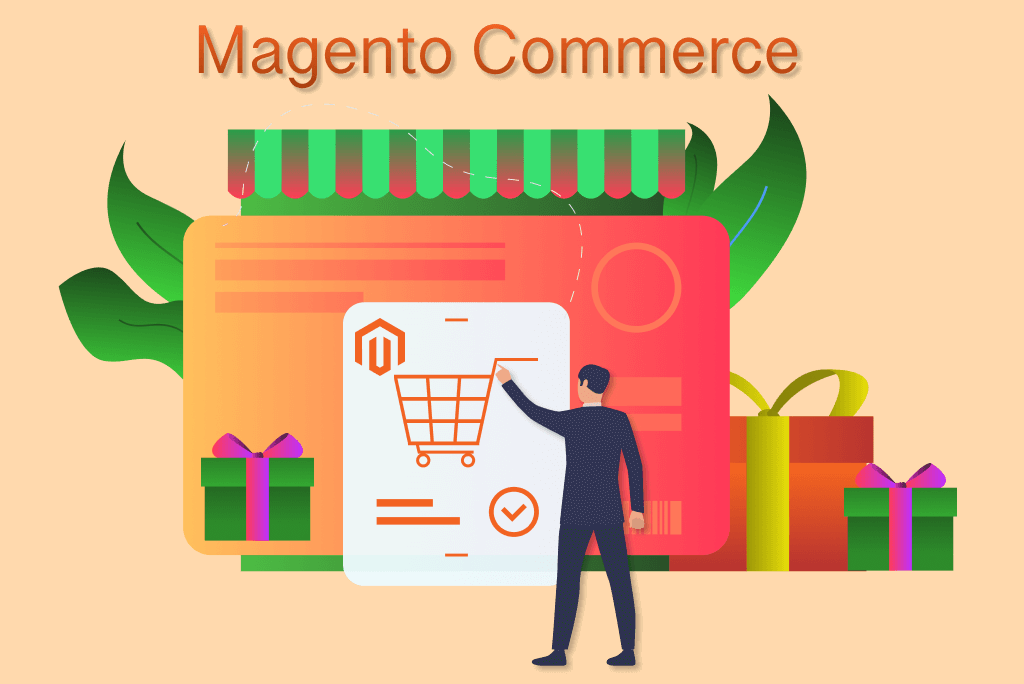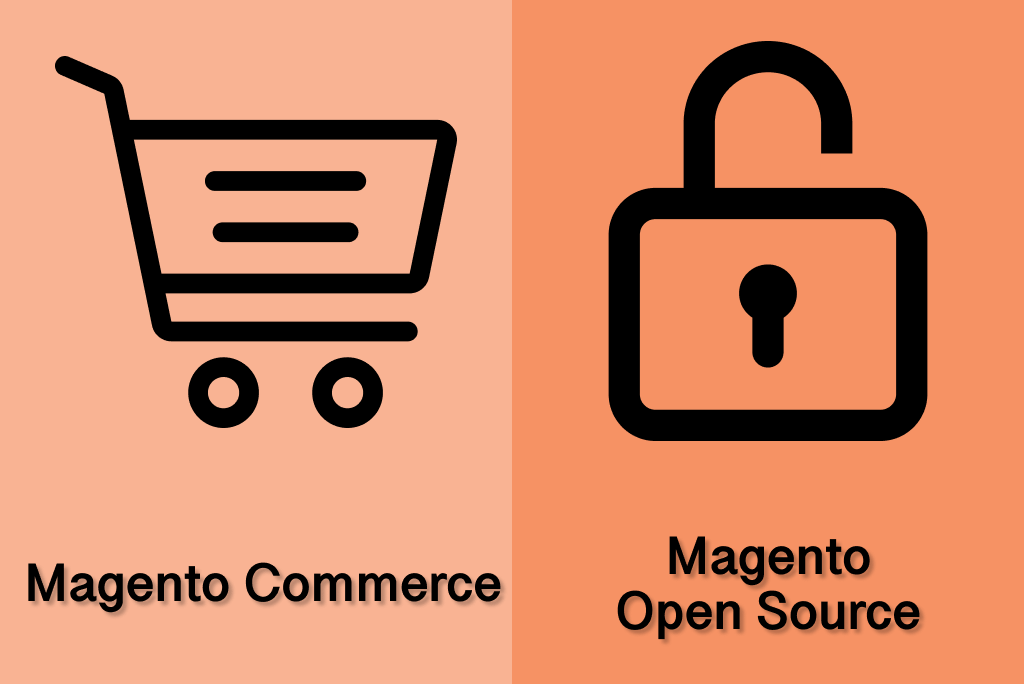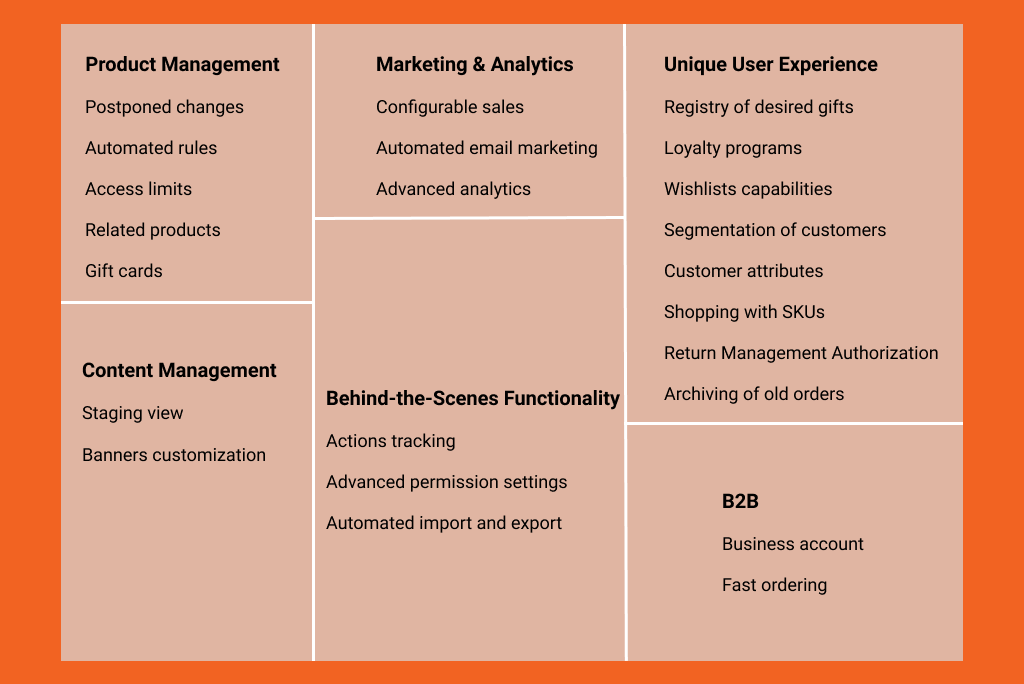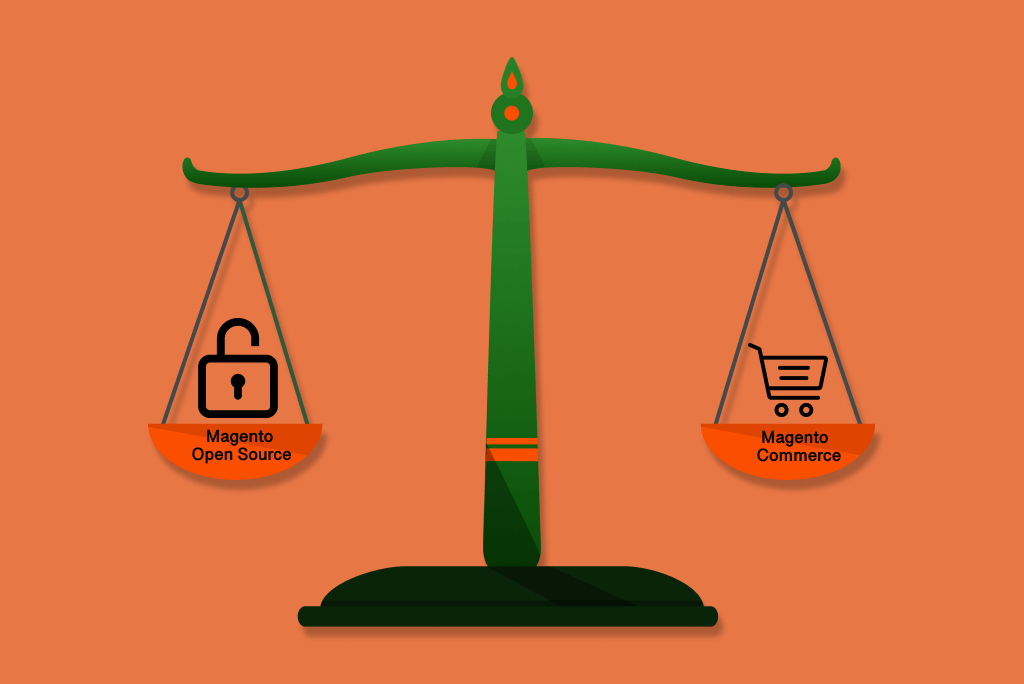Magento is a powerhouse that packs in a lot of eCommerce-centric features. Performance, security, SEO-optimization, and mobile-friendliness are just a few of Magento's benefits.
But the question is how to choose the right Magento 2 edition?
Magento is distributed in 3 versions that differ significantly. In order to make a choice that will bring your business forward, you need to know all the ins and out of all the solutions. That is why, in this article, we are going to review the following matters:
- basic information about Open Source, Commerce, and Cloud editions
- Magento 2 Commerce and its main features
- in-depth comparison of editions
- main steps to making the right choice
Magento Open Source vs Magento Commerce: Basic Differences
Undoubtedly, Magento is a powerful solution, and its status as the second most popular eCommerce platform in the world proves the statement. Over 260,000 companies have chosen one of Magento editions to power their online businesses.
How to choose between Commerce and Open Source?
Continue reading to learn about the differences that set the versions apart on the basic ground.
What is Magento Open Source?
This version probably serves as the main reason behind the popularity of Magento. Its name is self-explanatory. It is an open-source edition of the software that is distributed free of charge. By offering developers the ability to change the source code, this version allows for higher flexibility and ease of adding needed features.
Open Source edition might be the best solution for those who need a solution to power small to medium online stores. It enables business owners to set up a storefront, add necessary features, and make it live with minimum resources.
Magento Open Source is favored by companies of all sizes thanks to its more lightweight structure that results in higher performance out-of-the-box. Among the leading names using it, you can find companies such as Christian Louboutin, the V&A, Bucherer, etc.
What is Magento Commerce?
This is another version of the Magento platform. Unlike the previous solution, this one is distributed as a paid software with advanced functionality. It is perfect for businesses of medium scale to companies of enterprise-level who want their stores to have more capacity, scalability, and unique features.
The main reason why many companies hesitate to upgrade to Magento Commerce is the price that comes with advanced support and broader functionality. It is distributed as on-premise and hosted solutions, and the one you choose influences the price you would need to pay.
Cost is the main point of hesitation for online merchants as the prices start at $22,000 and $40,000 for Commerce and Commerce Cloud accordingly. The Magento company uses a revenue-based approach. The above prices are an approximation for sellers whose businesses generate less than a million in sales. The amount you would need to pay may reach up to $125,000 and $190,000.
In addition to more advanced features, the paid versions provide access to some useful products from Adobe, like Target, Analytics, Experience Manager, etc.
Such big brands like Emporium, Marc Fisher, Monash University, Neverfail, and many others have decided in favor of Magento Commerce.
Cloud edition is used by such famous names like EGO, Helly Hansen, Oliver Sweeney, etc.
And the main reasons why they have chosen the platform and continue to rely on it in their business operations will be unveiled below.
How to Use Magento Commerce: Key Features and Benefits
Even though both versions were designed with the same goal in mind, Magento Commerce is more advanced in terms of features. It brings more value for merchants who need robust solutions that can withstand high loads.
The overall overview of the main features you can find out in our other article. Here we are going to concentrate on the functionality that the Open Source solution lacks. There are quite a few of them that are aimed at different eCommerce areas:
- product management
- unique user experience
- content management
- marketing & analytics
- B2B
- behind the scenes functionality
Let’s review all of them in more detail.
Product Management
Below are highlighted the main features. Their main task is to streamline operations related to one of the main tasks among eCommerce business owners – management.
- Postponed changes
Running an online store requires timely and regular updates of information. With Magento Commerce, it is possible to schedule changes. Choose the best time to update content or set a timer for price changes.
- Automated rules
The feature is designed to save time you would otherwise need to spend adding products and assigning them to corresponding product categories. By creating smart rules, it is possible to automate the process and bring it down to seconds. What is more, the visual mode feature allows to duplicate categories and create dynamic ones.
- Access limits
If an online store serves both B2C and B2B customers, there might be a need for access limitations. The task can be performed with the features called catalog permissions. For example, you can set prices for individual customers and businesses that purchase products from you.
The features are provided as a built-in option for Magento Commerce. The functionality can be added to a store running on a free version only with the help of extensions.
- Related products
The platform also supports upselling and cross-selling. Magento Commerce allows creating dedicated rules for products to be associated in bulk and without manual setting. For better targeting, it is possible to set rules and apply them to specific customer segments.
- Gift cards
This is another unique feature of Magento 2 Commerce. Gift cards are an efficient way of increasing sales and revenue. You can set up three types of gift cards: virtual cards, physical, and a combination of both.
Unique User Experience
Want to create a unique user experience and add features that will make customers love your store? You are about to find out the best practices that can be enabled thanks to Magento Commerce.
- Registry of desired gifts
Have you ever received a gift that was of no use to you? The customers of your store are no different. Fortunately, Magento 2 Commerce offers a feature that allows creating lists of desired gifts. Enable it in your store and get a chance for buyers to get what they want as a gift. When friends receive such lists, they will be more likely to buy presents in your store rather than spend time surfing the internet.
- Loyalty programs
What a better way to retain customers than with loyalty programs and bonus points. Magento 2 Commerce provides integrated functionality for the creation of reward points. You can set them to be appointed to customers based on their behavior and the size of their checks from previous purchases. Another available option is store credits, which, in potential, will increase the number of returning customers.
- Wishlists capabilities
Quite often, potential customers browse your store without proceeding to the checkout point. The ability to create a wishlist and to track the price and status of the products chosen can potentially increase the number of sales. Customers are more likely to return to the shops that provide such functionality.
Magento 2 Commerce takes the feature a step further. It provides the functionality to create multiple wishlists, which is a great option for those shopping for the holidays.
- Segmentation of customers
Every online shop stores specific information about each customer and visitor, like the contents of the shopping cart, address, order history, etc. With customer segmentation, it is possible to shop different content for each group of shoppers. Also, Magento allows creating such targeted showcasing of suggestions and other content based on the products viewed.
- Customer attributes
What makes a store successful? The right answer is an in-depth knowledge of its target audience. Magento Commerce edition helps to easily collect more specific information like gender, hobby, birth date, shopping preferences, etc.
- Shopping with SKUs
The functionality is especially important for wholesale businesses, as, for the B2B segment, it is especially important to have fast and seamless shopping. Magento 2 Commerce provides the ability to avoid tiresome browsing of an online store. Business customers can add products to the car by entering the corresponding SKUs.
- Return Management Authorization (RMA)
Product returns are a tough task to manage. Magento simplifies the process of goods returning, exchanging, and refunding in case a product is not delivered or failed to meet customers’ expectations. You can supervise all of these processes from a single admin panel and provide customers with a flexible return policy, thus increasing customer satisfaction.
- Archiving of old orders
Keep the workspace of your store uncluttered with the ability to archive old orders. Magento 2 Commerce allows setting time parameters that define for how long you want fulfilled orders and the related information to be shown in the admin panel.
Content Management
- Staging view
How will the creation of promotional material look like on the pages of an online store? With Magento 2 Commerce and staging mode, you can preview all the materials, create, and plan promotion campaigns.
- Banners customization
This feature is a supplement to price configuration and customer segmentation. With its help, you can create banners and use them within your promotion campaigns. By segmenting customers, you can create highly customized banners for each customer group and significantly increase conversion.
Marketing & Analytics
Marketing is an integral part of the eCommerce business. Magento 2 Commerce provides unique features that can help you take it a step further. Take a look at the main of them.
- Configurable sales
Sales are one of the ways to sell out old stock and increase revenue. With Magento, you can turn sales into something bigger. Show your appreciation to the most loyal customers by creating promotions specifically for them. You can set unique rules for different customer segments.
- Automated email marketing
Native functionality for email marketing allows to automate the process of sending out reminders to customers about abandoned shopping carts, wish lists, etc. Emails are automatically sent based on the predefined configurations.
- Advanced analytics
One of the best things about Adobe Commerce is the provided features for advanced analytics reports. It is possible to track anything in the store, from customer wish lists to abandoned carts and returns.
B2B
The paid version of Magento is ideal for companies working in the business-to-business sector. Many features are designed to streamline the process of product ordering and bulk purchases. Below are highlighted the main strong points of Magento in regards to B2B operations.
- Business account
The ability to create a business account is especially important if a store sells products to individual shoppers too. By registering with a store, corporate customers can get access to wholesale functionality.
- Fast ordering
For wholesale customers, there is a bulk ordering feature available. Products can be added by entering SKUs or product name in a dedicated form. They can also reorder products and make wholesale purchases automatically in accordance with a preset schedule.
Behind-the-Scenes Functionality
Magento 2 Commerce also has a broad range of features that are designed for store managers. The main of them are listed below.
- Actions tracking
The feature is especially crucial for bit online stores with a few admins who are responsible for backend actions. You can track what changes were made and who performed them.
- Advanced permission settings
It is possible to create multiple permission roles and assign them to different managers. This way, you define who will be able to update product information, who will be responsible for orders, and who will have the permission to only view product categories.
- Automated import and export
The process of downloading or uploading data from the system can be fully automated with integrated features. The system will deliver the needed files based on the predefined schedule and rules.
There is no doubt that Magento 2 Commerce is superior to the open-source version of the software when it comes to the delivered out-of-the-box features. All the while, almost all the features can be added to the websites built with a free version with extensions. However, there is a risk of downturned performance. As they are created by third-party developers, you need to carefully choose extensions so that they will not jeopardize the security of the whole system and take a toll on it speed.
Magento 2 Open Source vs Commerce: How to Make the Right Choice
Which version is suffice for your business?
Up to this point, you have probably understood that the choice between the two versions of Magento should be made based on your business needs. You should take into account everything, starting from your revenue to the sector where your store operates, what features are required, and even how many items you are going to places on the pages of your store.
The below table provides a quick overview of the main differences between the two versions of the same eCommerce software:
| Magento 2 Commerce | Magento 2 Open-Source | |
|---|---|---|
| Cost | $22,000+ | Free |
| Sphere of use | Medium and enterprise-level businesses | Small to medium businesses |
| Support | Advanced support | No support |
| Business segment | Built-in B2B and B2C functionality | B2C sector B2B features can be only added with extensions |
| Hosting | Magento Commerce needs hosting Magento 2 Commerce Cloud is hosted |
Hosting required |
To sum everything said above, take a look at the main aspects that should be considered when making a choice between a free and paid versions of Magento.
Magento Open-Source might be a good choice for you if:
- you operate in retail businesses
- the online store has less than 500,000 SKUs with only a few attributes
- you operate in a single country
- you do not need 24/7 support
Magento Commerce is a great choice if:
- you run a big online store and are engaged in wholesale
- you work in the B2B sector
- a store requires advanced marketing and analytics tools
- you want to create a unique user experience
- you are selling internationally or are planning to expand to new countries
- 24/7 is a requirement for you
Regardless of the license you choose, you need to find a reliable development vendor who will take on the task of store development, ensure high performance and security, and add all the features that can increase the chances of converting visitors into customers. To achieve good results, choose an experienced development company that knows how to use the features of the Magneto platform to the utmost.









